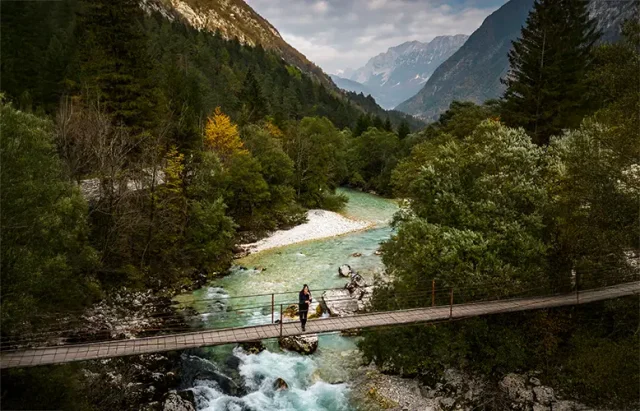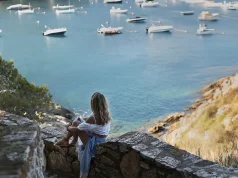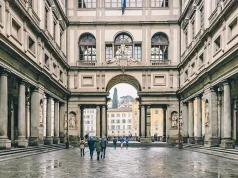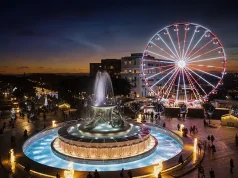
There are places that invite walking, and then there are places that demand it — not because the terrain is difficult, but because moving slowly is the only way to truly see them. Slovenia’s Soča Valley is one of those rare places. A ribbon of turquoise water winding through the Julian Alps, it’s a landscape shaped as much by silence and solitude as by time and trauma. To walk here is to move through nature, history, and memory all at once.
Slovenia walking holidays offer more than scenic routes. They trace riverbanks once crossed by emperors and soldiers. They pass through alpine villages that whisper stories from both world wars. They climb to vantage points where the view is pure wonder, and descend into gorges where light seems liquid. Whether you’re an experienced trekker or a curious slow traveler, this is Slovenia at its most alive — and most reflective.
The Soča River: Where Water Defines the Landscape
The first thing anyone notices about the Soča is the color. It’s not just blue — it’s electric, glacial, almost surreal. Fed by alpine meltwater, this river carves through steep cliffs, past mossy boulders, and along quiet meadows. Walking here means following its pulse, from its origin near the Vršič Pass down through the valley towns of Bovec, Kobarid, and Tolmin.
Many trails hug the river or crisscross it via hanging footbridges, offering constantly shifting views — from roaring rapids to mirror-calm pools. The Soča Trail (Soška Pot), a 25-kilometer waymarked path, is the valley’s most iconic route. It can be walked in sections or as a full-day journey, connecting mountain hamlets, swing bridges, and picnic spots with an effortless blend of access and immersion.
What makes this trail especially rewarding is that it’s not just a nature path. It’s also a living classroom, layered with ecology, geology, and echoes of war.
WWI History Beneath Your Feet
During World War I, the Soča Valley (then part of the Austro-Hungarian Empire) became the front line of the infamous Isonzo Front — one of the most brutal and drawn-out mountain battlefields in modern history. Between 1915 and 1917, twelve battles were fought in this region between Italian and Austro-Hungarian forces. Over 300,000 soldiers died here, many of them on the very ridges and slopes now crossed by hiking trails.
Today, the valley is part of the Walk of Peace (Pot Miru) — a cross-border trail connecting key WWI sites from Slovenia to Italy. In the Soča Valley, this includes the Kobarid Museum, one of the most powerful war museums in Europe; restored trenches and bunkers near Čelo and Ravelnik; and hilltop memorials like Kolovrat Ridge, where a 360° view reveals both the beauty and the brutality of the terrain.
Walking these trails isn’t about sadness — it’s about perspective. The path becomes a conversation between the past and present. One moment you’re listening to birdsong over a meadow; the next, you’re standing in a stone bunker carved into a cliff. It’s a kind of tourism that doesn’t shout, but lingers.
Bovec to Tolmin: Walking Through the Wild Heart
For those seeking a multi-day experience, the stretch from Bovec to Tolmin offers a compelling mix of natural drama and cultural depth. Each town is charming in its own right — Bovec with its alpine sports vibe, Kobarid with its food and history, Tolmin with its wild gorges and festivals — and the trails between them are nothing short of stunning.
The Soča Trail is the backbone, but walkers can branch off to explore hidden waterfalls like Kozjak, climb panoramic peaks like Krn, or descend into the Tolmin Gorges, where water has sculpted a fairytale of stone and moss. These are trails where you’ll pass goats grazing under fruit trees, walk through forests thick with beech and fern, and emerge at mountain inns serving local cheese and štruklji (rolled dumplings).
Each day feels like a full story. And each night ends in a quiet village, a family-run guesthouse, or — for the lucky — a riverside camp where you fall asleep to water over stones.
Self-Guided or Supported: How to Walk the Soča Valley
The valley is ideal for self-guided walking holidays in Slovenia. Trails are well-marked, distances manageable, and services spaced just right. Tour operators offer packages with luggage transfers, accommodation bookings, and GPS maps — giving you freedom without the stress of logistics.
It’s also easy to adapt routes to your ability. Want gentle riverside walks and cultural stops? Stay near Kobarid and explore in loops. Prefer bigger elevation days? Base in Bovec and tackle the high trails near Vršič or the Seven Lakes Valley in Triglav National Park.
Spring (May–June) and early autumn (September–October) are best for walkers — mild weather, lush scenery, and fewer crowds. Summer is beautiful but warmer and more popular with families and river sports enthusiasts.
What Makes It Different
Soča Valley walking isn’t about ticking off peaks or collecting summits. It’s about flow — the pace of the river, the rhythm of your steps, the way light changes over the mountains. It’s about walking without rush, without noise, without distraction. Here, walking isn’t the means to a view. It is the view.
It’s also about connection — to a landscape that remembers, to people who still live in harmony with the land, and to a style of travel that asks for presence, not performance.
In an age of over-curated destinations, Soča remains real — raw in parts, refined in others, but always honest. It doesn’t market itself with slogans. It doesn’t need to. It just exists, waiting for those who take the time to walk through it.
A Path That Stays With You
There are hikes you do for challenge, and there are walks that stay in your bones. The Soča Valley is the latter. You won’t remember it for a summit selfie or a badge of endurance. You’ll remember the clarity of the water, the cool stone under your hand in an old trench, the silence of a forest path, and the way a footbridge swung gently as you crossed the river one last time.
If you’re looking for a holiday that balances history with nature, solitude with connection, and effort with ease — come walk the Soča. Not because it’s famous, but because it’s true.





